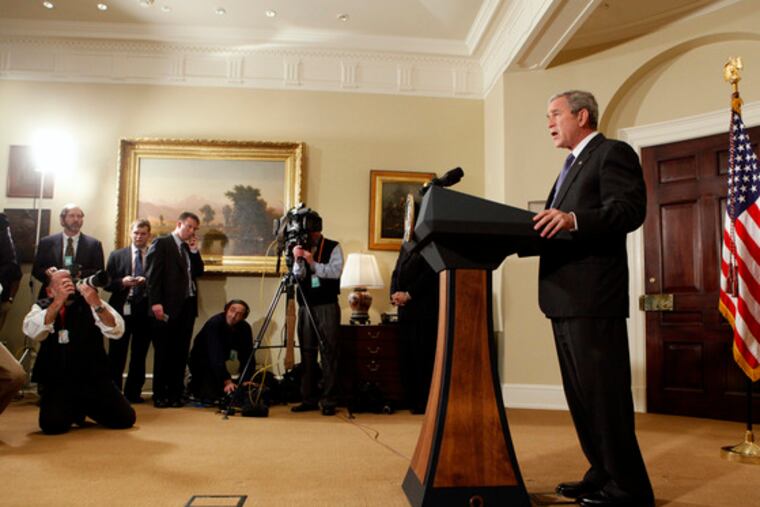
President Bush's bailout of General Motors and Chrysler prevents an economic calamity, for now, and dumps the responsibility on his successor to enforce the vague terms.
In agreeing to lend the automakers $17.4 billion, Bush really had no options. GM and Chrysler would have run out of money by the end of the month, a failure that could have resulted in the loss of up to three million middle-class jobs next year.
On top of the two million jobs lost this year, such a blow would have deepened a recession that is already the worst in a quarter-century.
"In the midst of a financial crisis and a recession, allowing the U.S. auto industry to collapse is not a responsible course of action," Bush said. "The question is how we can best give it a chance to succeed."
Bush's decision against forcing the automakers into bankruptcy is the right one. In this tight credit market, consumers would be especially wary of committing their hard-earned cash to a high-cost product from a bankrupt manufacturer.
Much of the agreement resembles the deal that fell apart in Congress. Firms must provide warrants for nonvoting stock; debt owed to the government would be senior to other debts; firms must allow the government to examine their books; and the automakers must not issue new dividends until they pay back the government loans.
As necessary as this bailout was, the agreement falls short in protecting taxpayers. The goal is to guarantee the automakers' viability by March 31, or the loans could be revoked. But it will be left to President-elect Obama to decide whether the automakers are meeting an overly squishy definition of "viability."
The deal requires the companies to lower their debt by two-thirds via a debt-for-equity exchange. It also calls for the companies to reach agreement with the United Auto Workers to cut wages to levels that are competitive with what foreign automakers pay their nonunion employees in the United States.
These targets are nonbinding, and could be changed by the incoming administration. The automakers can make different arrangements with the union, as long as they explain how a Plan B would keep them on the road to profitability. Given all the urgent problems piling up on Obama's agenda, he's not likely to press the automakers very hard.
The loan deal places limits on executive compensation and forces the companies to sell those infamous corporate jets. Unfortunately, it does not require the companies to replace the management that has led them to this sorry day.
Despite the weaknesses in this agreement, the automakers and their stakeholders - unions, suppliers, dealers - can make it work if they recognize it for what it is. It's their last chance for survival.
Without this temporary lifeline, they'd go under in a matter of weeks. Even with this aid, they could still fail within a few months unless all parties are willing to make significant concessions and restructure a game plan that has failed miserably.